Usually I spend time talking to you about an artist and all their work, but I thought I might try something different and I hope you like it. I have been given permission by the National Gallery of Victoria to use some of the images of art works to show you ones I like. It is also hoped we can discuss them as well.
To start off this new thread, I thought I would share with you one of my favourite paintings, Anguish by August Friedrich Albrecht SCHENCK.
It is an incredibly sad painting and the mothers looking at it, I’m sure, would feel a lot of emotion with it.
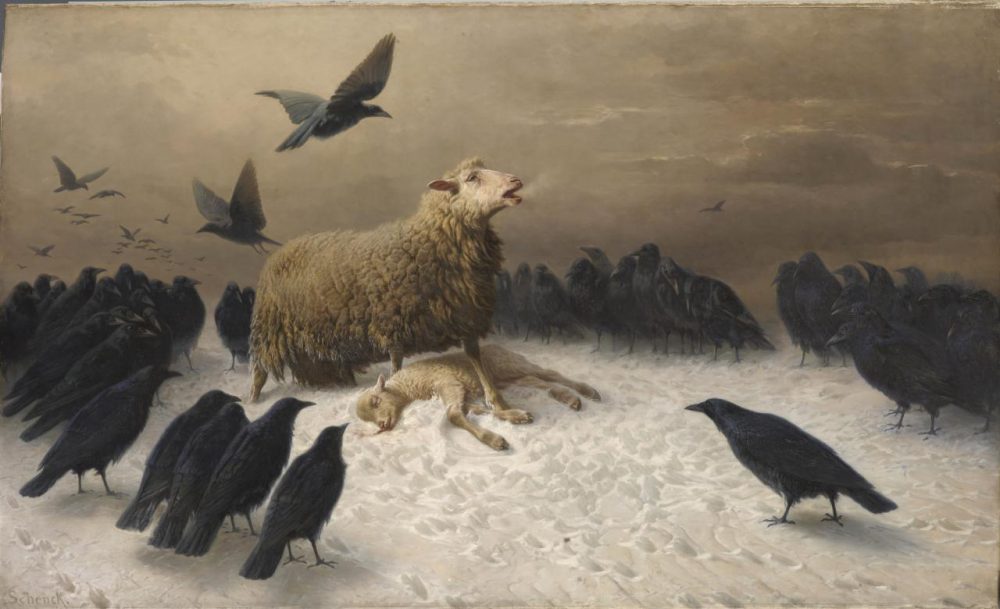
(Angoisse)
(c. 1878)
August Friedrich Albrecht SCHENCK
oil on canvas
151.0 × 251.2 cm
National Gallery of Victoria, Melbourne
Purchased, 1880
As you can see, the painting depicts a ewe standing over her lamb that has died. In the notes it says that the crows killed it. I have never really looked at it that way. More that the mother ewe is trying to stop the crows from eating it, or whatever it is that crows do to dead animals.
The actual painting has so much detail in it, and you can see the anguish on the ewe’s face. There is a little stream of bloody from the lambs mouth so we know that it is dead. There are many footprints in the snow, either from the mother circling her baby, or from the crows as they try to get closer.
There is a very large number of crows, and that helps to give that impression of a hard winter. Do they all think that this one dead lamb will be enough? There is more anguish there than just from the mother.
The painting is done in very muted colours and there are no bright colours. There are many greys, browns and it could almost be described as a monochrome image. It, perhaps, gives the idea of why monochrome images can be so powerful, once you strip away the colour you are just left with the textures and patterns, or in this case the emotion.
Of course, the thing that Schenck does is give us the raw emotion of motherhood and loss. The painting has so much in it, and you can feel the despair of the ewe as she tries to protect her baby. It is a hard thing to do, to create this sort of mood and get people to connect with it, but it has been done brilliantly here.
What emotions do feel when looking at this painting?
While this is predominantly a photography blog, we can learn so much by looking at paintings, and other art forms. Seeing how they were put together, or created, can teach up so much. I hope you have enjoyed the first one of these, and will be looking forward to more.
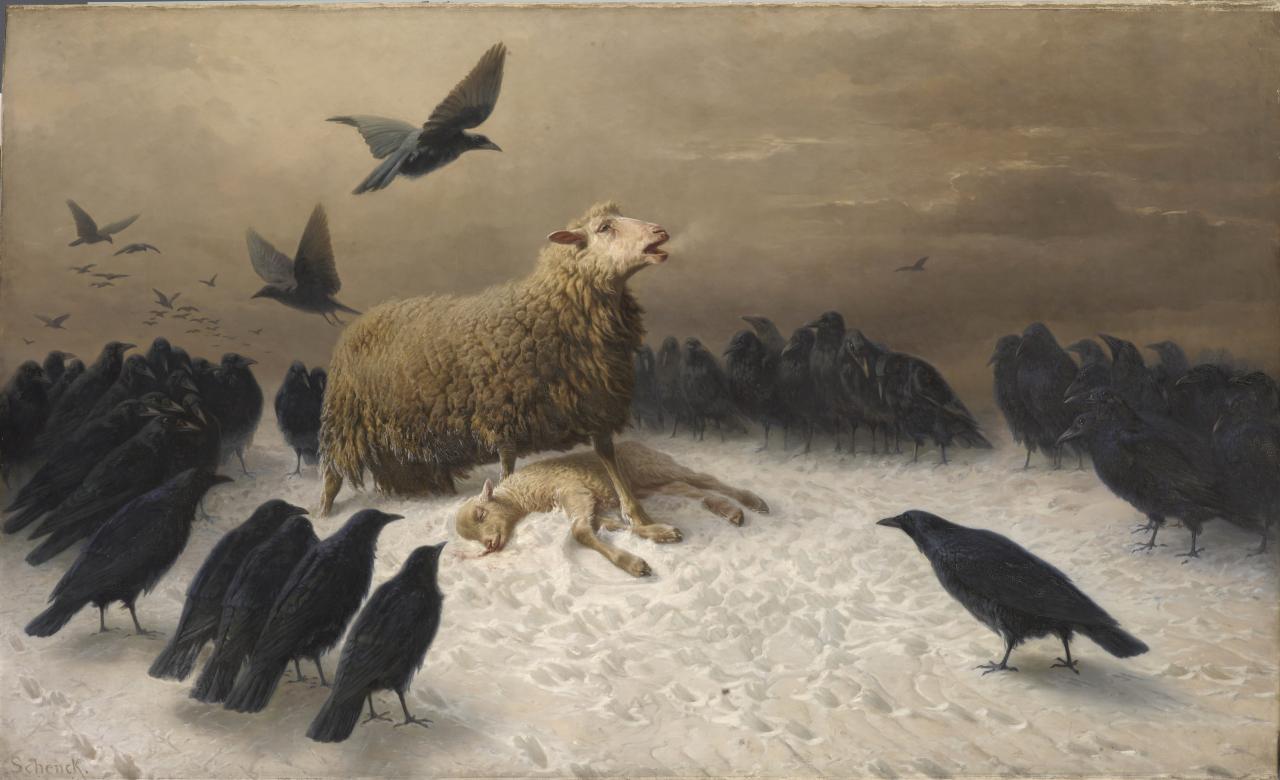
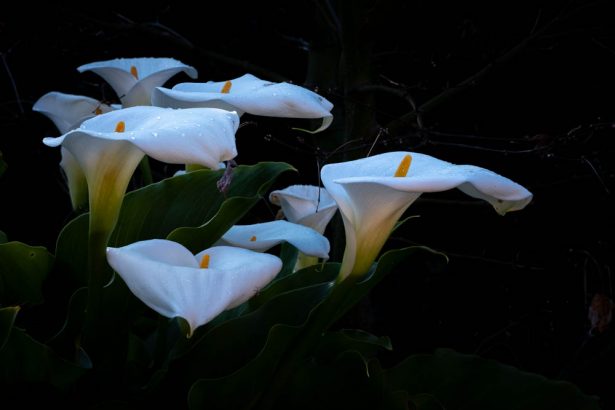

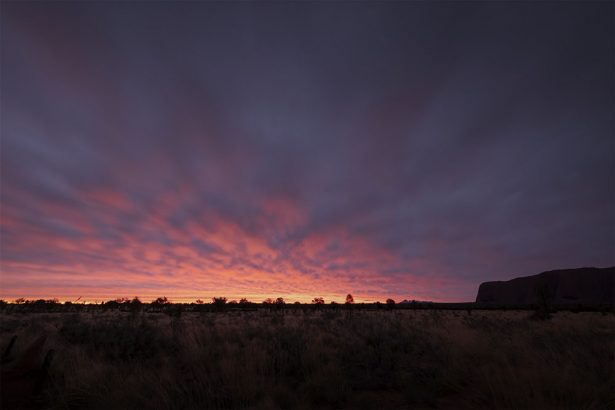
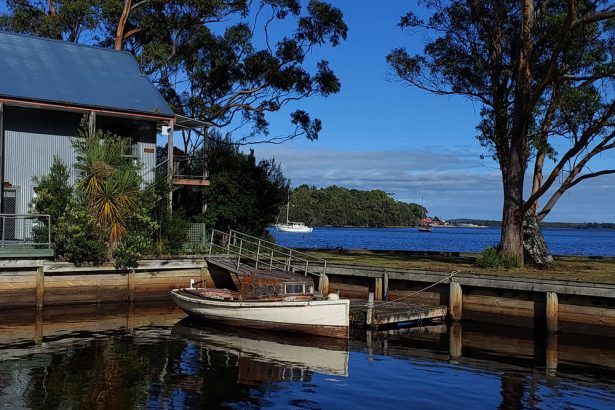
Very powerful painting, Leanne!
It is Noel, thank you.
Wow that is intense. I love the passion the artist has for that painting…you can see it in the colours and the facial expression of hte sheep…amazing…
that is a great response to it. Wonderful, thank you.
I too think it’s powerful!! A mother is a mother!
That’s great to hear Cybele, and exactly.
I noticed the breath coming from the ewe.
It’s brilliant, really, the way he chose animals for this theme. It is so powerful. A human mother wouldn’t have had the crows to contend with and they add the cycle of life aspect that is so brutal yet natural. Also that the ewe has feelings. And that breath is amazing. It shows it is cold but so much more. It shows movement and life. Also to me it stands out against the clouds, another cycle of life, the clouds are water and the breath is water vapor of a living creature, the mist looks like a pocket of light in the cloud.
I love it when you share these masterpieces and discuss them, Leanne. I love art and I get so much out of your analysis. Thank you.
I agree, sort of helps us to step away from it a little. Like George Orwell’s Animal Farm. It is another cycle of life.
Thank you Nicci, that is wonderful to hear, so glad you enjoy these posts. More to come.
I agree that this is a powerful image – but perhaps too sentimental. I don’t think the crows killed the lamb as there are no marks on its body. SCHENCK is depicting the terrible truth that life has its tragedies. The lamb died due to its harsh environment ~ life (and death) happens. We have all experienced this to one extent or another, so our heart goes out to the ewe as it reminds us of these events. The artist is exploiting our sensitivity. The crows? Well perhaps this is the counterbalance to the tragedy. What is anguish to the ewe is fortuitous for the crows. They too have done it tough during the harsh winter, now they can survive. Every cloud has its silver lining.
I suppose in the time it was painted, it was more often a reality as well, a mother losing her child to the conditions of the day. Maybe it is a mother thing, but I always think how tragic it would be to lose a child, and I love how he has painted that, using animals instead of people, showing a completely way to look at it.
Thank you Don.
The first thing that came to mind upon seeing this was fear.It’s like watching every parent’s worst fears unfolding.
I have to admit, I look at it as a mother, and wonder what I would do if my child died. The crows or ravens could represent the cycle of life or something like that.
Thank you.
The loss of a loved one is the message of this powerful and evocative painting. Art is just another means to deliver a meaningful message. In that sense photography and art are closely related to each other.
I couldn’t agree more Peter, and I don’t think every image has to be happy. Thank you Peter, good to see we are thinking along the same lines.
I would have thought the same, that the mother was protecting her dead lamb from being eaten by the birds rather than the birds having killed the lamb. To me the painting has a high degree of hopelessness due to the sheer numbers of the birds and the way they are poised waiting, then contrasted against the protective defiance of the ewe in the face of the inevitable.
You are right it is good to share other art forms as oil paintings and truly the same rules apply to photography in mood and composition. I enjoy the composite work of today’s digital artists, creating surreal scenes as one might paint.
Yes, I see the hopelessness too, and I suppose as a mother can I feel that anguish.
I’m glad you feel the same way, I think it is important and something that we had to do at art school. I enjoy that work as well.Thank you Judy.
The tones and the encircled mother enhance the pathos. This is excellent. Thanks for sharing it.
You’re welcome Sherry, glad to hear you like it.
love this painting
I’m so glad to hear you say that, I love it too.
Showing this painting is a really good idea, and I look forward to seeing more in this vein – photographers need to look at all sorts of images, not just photos by any means – to add to what one writer called the visual libraries in our heads. For me the emotional side of the painting is overdone, but no doubt that’s a style of those days. And, yes, there’s not the slightest doubt that the crows are looking for food – in earlier days, Ravens were famous (at least in stories) for scavenging on battlefields.
Thank you Adrian, I’m so glad to hear you say this.I agree, I firmly believe you should look at lots of art, all the time. I hadn’t heard that about ravens, I think so, definitely looking for food.
That one definitely hits you deep Leanne. I would be curious to hear the story behind this, tragic as it may be.
It does, it is very effective. I don’t know the story behind it I’m afraid. I did try to find out more, but was not able to find that out.
I expected you would have. Thanks for the great content.
You’re welcome.
This painting almost brought tears to my eyes and left me feeling sad
It is very sad, but what I wanted you to think about was how powerful an image could be.
I am a mother and I feel sad just looking at the painting.
It is very sad Shiela, but if we go beyond that and think about how powerful the image is. We can see that images do have the capacity to move people. We can learn a lot from that.
I do so enjoy the dichotomy in the works of this artist. The crows are depicted in Chiaroscuro while the ewe, lamb and snow are illuminated by light that radiates from above. There is much to the message.
Very true, it is quite a message, and it works really well.
Such sadness in this losing battle. A very potent painting. Would love to see you select an inspiring painting that is uplifting in a future post, though.
There will be ones that are more uplifting, but it is good to look at ones that are sad, it goes to show how powerful an image can be.
That painting gives me the shivers. Very powerful.
That is a great reaction Marilyn, it is very powerful.